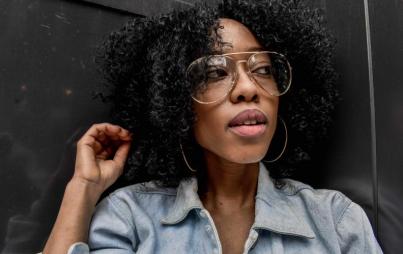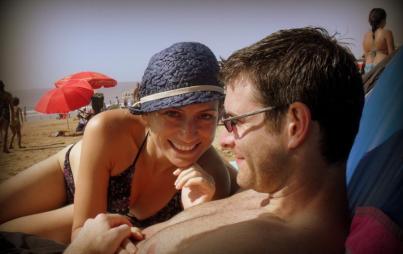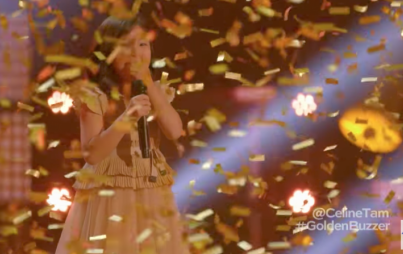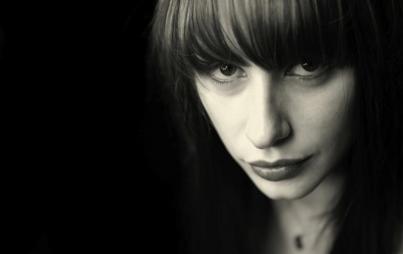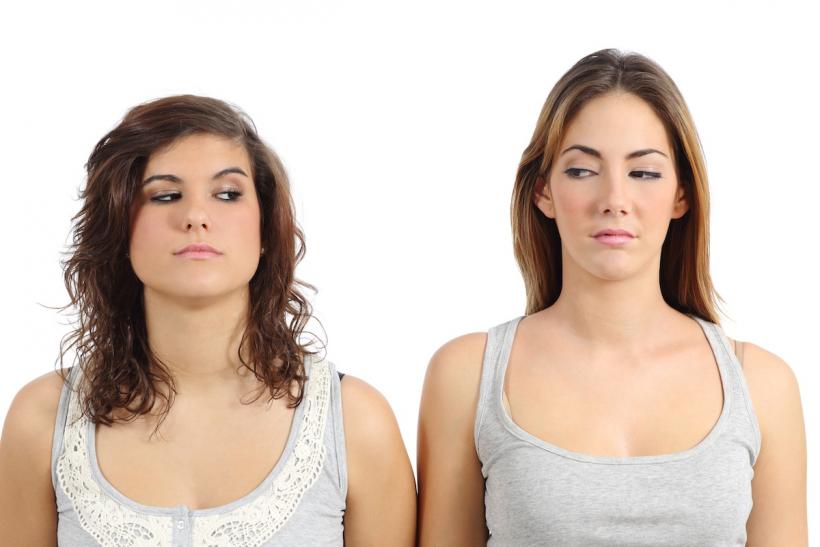
It is easier to hate what we want than to pursue it.
This article first appeared on Role Reboot and has been republished with permission.
“Stop talking to her. That girl is your enemy.”
These are the words of Tonya Harding’s mother, LaVona, to a pre-teen Tonya at her skating lesson in the Craig Gillespie biopic, I, Tonya. LaVona, played by Golden Globe Best Supporting Actress winner Allison Janney, sits rink-side to scrutinize her daughter’s progress as a figure skater, as well as isolate her from any distractions, including potential new friends. In LaVona’s view, all the other girls in figure skating coach Diane Rawlinson’s class are also potential competition.
In the wake of renewed fascination with the true crime of the mid-90s —The People vs. O.J. Simpson and the Emmy award-winning documentary series on Simpson, for example — I’ve been revisiting the formative news stories of my adolescence and considering the effects they’ve had on my adult worldview, not to mention the poignancy and context that writers like Amanda Marcotte identify to better understand our current moment. I, Tonya has helped me locate an important genesis in my relationships with women, along with the unconscious classism and white supremacy that undergirded my treatment of women as rivals for many years (and that I still must consciously fight in myself today).
I was 12 years old in 1994, the year that Tonya Harding was accused of participating in the plot to attack Nancy Kerrigan and take her out of the Olympics. I did not grow up as poor as Harding did in Portland, Oregon, and I didn’t suffer the same physical and emotional abuse (mine was a spanking household, not a knife-throwing one), but my single mother and I were squarely lower middle-class, living on the first floor of a duplex in an old manufacturing town of upstate New York.
Like Harding, who in the film demands brand-name Dove bars in her freezer once her skating career takes off, I had champagne tastes far beyond my mother’s administrative assistant salary. I coveted everything that the wealthier, and therefore popular girls at school had: the right clothes, the right hairstyles, the right cars in their garages at home, the right homes in neighborhoods we on the other side of the tracks called Peanut Butter Hill and Snob’s Knob. Our duplex was situated on what would eventually be named a Superfund site, thanks to groundwater contamination perpetrated by the IBM corporation.
There were other things to further outcast me — my bookworm tendencies and teacher brown-nosing and first-chair flute playing — but I did what I could to build my social capital, or else I tried to disappear in the cloud of the Bath and Body Works cucumber melon spray that blanketed my large, suburban middle school.
If I couldn’t be popular, I would secretly hate the popular girls.
It is easier to hate what we want than to pursue it, though I never did stop pursuing it entirely, and equally envied those Courtney Love-type girls with the guts to hate it openly.
My oldest cousin, slightly more well-off in a better part of town, was an accomplished gymnast, and this — her petite body coupled with her blue eyes and gymnast’s grace, along with the trophies and sparkly leotards of her meets — put her in a social category far above my own. I resented being the lesser of us almost as much as I envied and emulated her wherever possible. We spent plenty of time together outside the cutthroat hallways of Jennie F. Snapp junior high, and since figure skating was the gymnastics of the winter Olympics, we watched the Harding/Kerrigan story unfold with ravenous interest.
I did not want to recognize myself in Tonya Harding, so I pretended that I didn’t. Like my cousin and most of America, I purported to be a staunch Kerrigan supporter; to be otherwise was unthinkable where I lived, especially if you were a girl. In my almost-homogenously white hometown, just about the worst thing you could be was “trailer trash.”
That same year, I took up the first and only sport I ever participated in, and like Harding’s, mine was imbued with the same classism, racism, and competitive narratives about women: horseback riding. Specifically, English hunter jumping, with its roots thick in British aristocracy. Fox hunting and all that.
You Might Also Like: What's Not Said: “I’m Jealous of You.”
It was a sport I absolutely could not afford — my mother had to cash in my college fund to finance it, and even then, I had to buy used equipment, roaming the vast warehouses of secondhand tack sales with my coach, Jill, a renegade in the sport herself — loud, brash, bleach-haired and buff, not at all unlike Harding. Even in the pastoral world of 4-H riding competitions, my 23-year-old mare, Fancy, and I were initially seen as embarrassments, an ironic joke. We were not fancy at all. We were unkempt, unruly, and disrespected by the clique of girls in my 4-H troop who wore new jodhpurs and French braids under their velvet-covered helmets. Some of them were very mean to me; others were kind in private but wouldn’t dare invite me to their sleepovers or birthday parties.
I wish I’d felt entitled to Harding’s arrogance about my riding abilities, which were not world-class, but fair enough, as later competitions would prove. But mostly, I just felt the same envy that I did at school. I hated the other girls in my riding competitions because I wanted to be them. I didn’t have Harding’s courage to be myself instead.
As I, Tonya sardonically remembers, the media fed themselves on the Harding/Kerrigan rivalry. Footage in the 2014 ESPN documentary The Price of Gold shows reporters questioning Harding and Kerrigan long before “the whack heard ‘round the world” as to whether or not each woman felt they could beat the other. Kerrigan blithely dismissed the assertion that she should worry about Harding’s famed triple axel in the Olympic qualifiers, while Harding boldly said that if she and Kerrigan both skated solid programs, Harding would win. The Price of Gold compares the world’s captivation after the attack on Kerrigan as like watching a soap opera play out in real life. We devoured it.
That footage also captures the narratives of femininity foisted upon Harding and Kerrigan by both the media and the American Figure Skating Association. When Harding lands her triple axel in a 1991 competition, the announcer shouts, “Good girl!” In other footage, commentators describe Kerrigan’s style as “ladylike.” Unlike the independent-minded Harding, Kerrigan played up her physical assets for the role of lady champion. She grew out her hair and traded her earlier tomboy ways (Kerrigan, too, was raised in a working-class family, though few familiar with the assault know this) for a style that bespoke a more privileged background.
Despite Harding’s immersion in a feminine sport, I, Tonya shows Harding to have almost no women friends. Instead, she parties and squeals donuts in the mud with her husband, Jeff Gillooly, and his rag-tag friends, some of whom eventually execute the attack on Kerrigan (of course, they don’t do this out of some misguided loyalty for Harding, but for Gillooly, who wants to ride his wife’s gravy train after she wins Olympic gold). After middle school and my horseback riding days, I, too, became a girl who primarily hung out with boys. My college roommate and I prided ourselves on being the chosen girls who could party just as hard as our male friends, and even in graduate school I could most often be found on the weekends pounding beers, shooting darts, and smoking weed with a group of ambitious male writers in my MFA program. I told myself that I got along better with boys because I was more like them.
But I’ve never measured my success as a writer against the success of the men I once surrounded myself with. No, it’s always been other women to whom I’ve compared myself. And let me get even more honest: I’ve habitually, if unconsciously, compared myself to other white women who, in far greater numbers than women of color, are granted competitor status in America’s Olympics of life.
White women like Nancy Kerrigan (and yes, before Kerrigan we had Kristi Yamaguchi, but who talks about her now, and does anyone remember Michelle Kwan?), whose porcelain skin, lacy costumes, and professional successes were held up as gold medals to white, working class girls like me. We could take a shot at that kind of success if we got our package—looks, talents, and perceived graces, social and otherwise — into lockstep. That leaves a whole lot of women out of the contest altogether, and consolidates both the fight to claim the Kerrigan-like ideal and the feminist fight against that ideal.
Several things happened to help me overcome my distrust and jealousy of other women.
I began reading women’s writing almost exclusively, taking my writing lessons from them. I became a mother and recognized my struggles as mothers’ struggles. And I began to use the Internet as a conduit between myself and other women by joining online mothers’ and writers’ groups that have sustained and changed me. It turns out that the best readers for my work tend to be women, and that when women feel safe enough to be vulnerable with one another, we learn how many ways our lives have been similar, as well as different.
However, the membership of these groups, too, have tended toward whiteness in a way that troubles me. Marcotte says that Harding’s story is “an emblem for our era: She’s angry, she’s messy, she’s incredibly flawed and she doesn’t apologize for it.” Harding’s anger and the exemplary performance by Margot Robbie inspired by it is indeed important, but if Marcotte sees it as symbolic of today’s feminism, it is also because Harding’s white privilege allows us to look back and see her anger as righteous, not scary. Will Serena Williams’ anger one day get venerated as Harding’s now is, however overdue? When feminists pick symbols like Harding, we do the good work of recognizing the interplay of class and gender that makes her story compelling and infuriating, both similar and very different from Kerrigan’s, whose story is also important in other ways. Race matters, too. Our identities and our narratives—the ones we are given and the ones we give ourselves — cannot be teased apart.
I haven’t seen my gymnast cousin in many years, though we both ended up as English teachers, and I sometimes picture us each hunkered over our students’ papers at night. I haven’t seen the 4-H girls in even longer. I wonder what happened to their magnificent, expensive horses, and if they can imagine that my grief when Fancy died could be as great as theirs for their prize-winning animals. I wonder if women’s pain and struggles really are the greatest equalizers, regardless of the scales I think are necessary to describe and honor them. Because none of us will remain at any fixed points. Our pain will intersect.
There’s this scene in I, Tonya — a blip of a scene, really — that flashes back to Harding and Kerrigan’s early days on the competitive skating circuit. An older Tonya recalls that she and Nancy sometimes roomed together at these competitions, and the camera cuts to a young Tonya and Nancy shot-gunning beers and smoking cigarettes, laughing on their motel beds together. It’s not a particularly emotional moment, but it gets to me now, allowing me to imagine another, more tender way their relationship could have played out. As fellow skaters fighting for the respect of female athletes. As women who grew up in vastly different circumstances and had vastly different narratives assigned to them, but shared the challenges of the ice, the media’s eye, and the world’s expectations. As friends who learned from each other so they could make each other better at what they loved.



